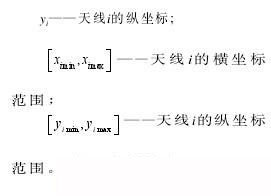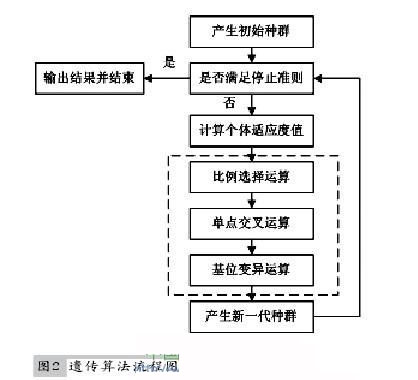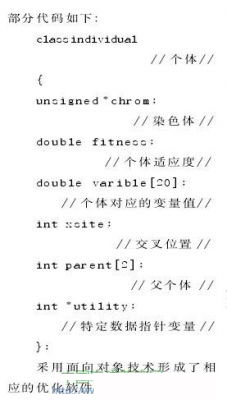
Privacy statement: Your privacy is very important to Us. Our company promises not to disclose your personal information to any external company with out your explicit permission.
1 Introduction
This article refers to the address: http://
With the development and upgrading of electronic information countermeasure systems, radar systems, weapon control systems, command and decision systems, and communication and navigation systems, the operating frequencies are highly dense or even overlapping, and the electromagnetic power density per unit volume is within a limited spectrum. Rapid increase in electromagnetic interference and sensitivity of various electronic devices. In particular, as an antenna on a carrier that has a significant influence on the electromagnetic environment, the type and number of antennas tend to increase. There are only a few antennas on the platform, and dozens of dozens of parts, and some even reach the level of antennas. These conditions have caused the electromagnetic environment inside and around the carrier to become more and more complicated, which has led to an increasingly prominent problem of electromagnetic compatibility. As an antenna that directly affects and restricts the electromagnetic compatibility of the system, its electromagnetic compatibility problems, including theoretical analysis and prediction, design techniques, and test debugging, naturally become a concern.
In this paper, an antenna optimization layout method based on genetic algorithm is adopted. The antenna layout can be optimized by considering different factors. The rough optimal layout scheme can be obtained in the early stage of electromagnetic compatibility design, which reduces the difficulty of antenna layout design.
2. Main factors affecting antenna performance
An antenna is an important radio device that transmits and receives electromagnetic waves. Without an antenna, there is no wireless communication. The main function of the antenna device installed on the communication vehicle is to complete the transmission and reception of information. Influence antenna
The main factors of performance are the coupling degree between the antennas, the radiation pattern of the antenna, and the near-field radiation hazard of the antenna. The main factors of influence antenna EMC will help us determine the objective function is optimized when the antenna arrangement.
The following analysis of the impact of these three factors on antenna performance:
(1) Coupling degree: When the coupling degree between two antennas is too large, the power is reversed, which makes the impedance matching of the transmitting antenna difficult, and even causes intermodulation interference;
(2) Directional diagram: When the distortion of the antenna radiation pattern is severe, the gain of the antenna in some directions will be significantly reduced, resulting in the transmission of information in this direction being blocked;
(3) Near-field radiation: If the high-power antenna is not properly configured, it will cause radiation damage to equipment and personnel, which will cause accidents.
In summary, the smaller the coupling degree is, the better the distortion of the antenna is. The smaller the distortion of the pattern is, the better the near-field radiation is. Since the power of the antenna loaded in the communication vehicle is not high, the near-field hazard caused by this is relatively small, and can be reduced by strengthening the body shielding or filtering, so no major discussion is made here. The antenna pattern is divided into omnidirectional and non-omnidirectional. For non-omnidirectional antennas, the antenna should be arranged to avoid the maximum radiation direction of different antennas, so that the distortion of the pattern can be reduced without overlapping. For omnidirectional antennas, this can only be achieved by optimizing the layout algorithm. Coupling degree as antenna electromagnetic
The important factor of capacity performance, because it has the closest relationship with the antenna position, is the focus of research, and because the coupling degree is small, the distortion of the pattern will be correspondingly reduced. Therefore, the optimization target selected in this paper is the coupling degree between the antennas .
3. Optimization of the objective function
The traditional antenna layout optimization relies mainly on the experience of the designer, or the method of scale-to-model testing in the sample development stage. With the increase of the number of antennas, relying on the experience of researchers alone can not meet the requirements of complex electromagnetic environment, and the scale is more expensive than the model. It is not suitable for the design and production of vehicle systems. Therefore, the optimization of the roof antenna layout must be efficient. The optimization algorithm forms the corresponding layout optimization software to improve the efficiency of the design communication vehicle and optimize the antenna layout.
The degree of coupling is an important parameter that reflects the electromagnetic compatibility of the antenna and is used to measure the degree of interference between the antennas. For a pair of transmit/receive antennas, the degree of coupling is defined as the ratio of the net output power of the receive antenna to the net input power of the transmit antenna, as shown in Figure 1.


4. Optimization algorithm selection
Optimization technology is a mathematics-based application technique for solving various engineering problem optimization solutions. Antenna layout optimization belongs to global optimization in optimization. The requirements of the algorithm are that it can perform global search and less restrictions. Here we The genetic algorithm in the intelligent optimization algorithm is chosen.
Genetic algorithm (GA) is an efficient randomized search algorithm based on the genetic evolution mechanism of natural populations. It only needs to know the information of the objective function, and does not need its continuous micro-requirement, so it has wide adaptability and it It is also an intelligent search algorithm that uses heuristic knowledge, so it can often achieve better results than previous algorithms (such as gradient method) in the highly complex search space. The calculation process of the genetic algorithm is shown in Figure 2.
This paper optimizes the program design using the basic genetic algorithm (SGA), programming based on VC++6.0, chromosome definition


5. Examples and conclusions
The following is an example of four antenna systems to demonstrate the optimization of the antenna layout. There are four antennas on the roof surface, two are fixed antennas, and two are movable antennas. The layout requirements are shown in Figure 3 (see next page).
Figure 4 (see next page) compares the antenna coupling degrees during the optimization process:

It can be seen from the figure that the maximum and minimum absolute values of the integrated coupling degree of the antenna do not rise with the increase of algebra, and the optimal layout of the antenna is obtained in the 561th generation. The coordinates of the optimized antenna 3 (1.9 9, 0.9) 5), antenna 4 coordinates (1.47, -0.59), the comprehensive coupling degree is -154.793483dB. This example shows that the optimization of antenna layout based on genetic algorithm can achieve the expected effect, and is an effective means to optimize the antenna layout.
According to the development of the antenna on the vehicle carrier, the "electromagnetic compatibility of the antenna" problem was first proposed, as well as various technical parameters and technical indicators for analyzing, measuring and evaluating its compatibility. The basic concepts, research contents and main design techniques of antenna electromagnetic compatibility are expounded. The developed examples of electromagnetic compatibility of an airborne antenna sub-system are shown. According to the ideas described in the paper, various technical measures are implemented, and the expected technical indicators can be basically consistent with the measured values.
June 28, 2024
Wyślij je do tym dostawcy
June 28, 2024

Privacy statement: Your privacy is very important to Us. Our company promises not to disclose your personal information to any external company with out your explicit permission.

Fill in more information so that we can get in touch with you faster
Privacy statement: Your privacy is very important to Us. Our company promises not to disclose your personal information to any external company with out your explicit permission.